Is There Heavy Metals in Chocolate? Consumer Reports Cadmium Claims

Written by Samuel Zeifman
General Manager at Organic Rainforest SAC (the source of Rawmio cacao)
Peru
On December 15th 2022, Consumer Reports published an article on the levels of cadmium and lead found in dark chocolate bars produced by reputable well known chocolate manufacturers. At first glance, the article suggests that consuming dark chocolate is a high-risk activity consisting of high amounts of both lead and cadmium based on California's maximum allowable dose level (MADL).
What the article does not address is if this is a reasonable standard, and how the heavy metals found in dark chocolate are compared to other food products such as potatoes and French fries.
The article would also have you believe that there are a select number of brands and options that contain high amounts of lead and cadmium (which have now resulted in lawsuits) and others that are “safer choices” and do not pose a risk of having high levels of lead and cadmium. What the article fails to mention is that if you take the average cadmium levels of the 5 “safer bars” that they mention and if you consume half a bar you would also breach the MADL cadmium levels.
The article is misleading consumers to think that there are bars that are safe, and others that are dangerously high in cadmium. There is not a single dark bar of chocolate with 70%+ cacao solids (cacao paste/ liquor) including the 5 safer bars they mention where you could eat the entire chocolate bar and not breach Prop 65/ the MADL of cadmium for California.
I am the general manager of Organic Rainforest SAC which is a certified organic cacao and chocolate company located in Santiago de Surco Peru. Our factory is dairy-free, allergen-free, GMO-free, gluten-free, and we typically make our chocolate with 3 ingredients. I have been investigating the issue of Cadmium in cacao since 2018 based on strict EU regulations which it seems are moderate when compared to the state of California.
Take what you have read in the article with a “grain of salt” and consider the threshold that the author used as a benchmark for his analysis versus other possible threshold benchmarks. When you compare California’s suggested maximum allowable dose levels against those in the European Union (EU) (which is considered some of the strictest standards for limiting the levels of heavy metals, specifically in cadmium) the EU regulations are substantially more tolerant than those of California.

According to California standards, the MADL for cadmium (CD) is 4.1 mcg and the MADL for lead (pb) is 0.5 mcg. According to the EU regulations, the maximum amount of CD permitted in dark chocolate is 0.8 mcg. The EU standards - Regulation (EC) No 1881/2006 limiting the levels of cadmium in different foodstuffs limits the maximum amount of cadmium in cacao/chocolate (S.3.2.7) as follows:

What makes the issue confusing for the average consumer is how to compare the California PROP 65 regulations mandating the total consumption per day of cadmium to the EU regulations limiting the amount of cadmium allowed in chocolate.
If we were a chocolate maker that complied with the EU regulations limiting the maximum amount of cadmium in cacao with a test result of 0.8 mg/kg (which is the same as 0.8 mcg/g) and was to eat 1 oz (28 grams) or a chocolate bar like the Consumer Reports tested the chocolate bars against we would have a score of +446% in their article.

This begs the question, that a chocolate maker who is +446% over the limit of cadmium according to the MADL of California while conforming 100% to the EU regulations is the issue the chocolate industry or the draconian and un-reasonable limits of the California regulations?
Examining the Prop 65 California regulations limiting the consumption of cadmium of 4.1 mcg per day versus the EU regulations of < 0.8 mcg found in dark chocolate, how do you compare the two? It is confusing for most people. Not to worry, we have broken down the math the same as the Consumer Reports article based on consuming 1 oz (28 gr) of chocolate.
For the calculation, you take the maximum number of micrograms allowed to be consumed in California according to the MADL of 4.1 mcg and you divide that by the result of the laboratory analysis for your production of chocolate which can be expressed as ppm, mg/kg, or mcg/g (which is 3 different ways to represent the same result). That number gives you the number of grams that you would be allowed to consume in California to meet the limit of 4.1 micrograms consumed per day.
To find out the percentage your chocolate is over the MADL limit by consuming 1 oz (28 grams) you need the laboratory analysis of the amount of cadmium in the chocolate (expressed as ppm, mg/kg, or mcg/g) and multiply that number by 28. You take that number and subtract 4.1 (which is the California maximum) and then divide that result by 4.1 to give you the percentage over the limit.
In order to meet California regulations consuming a maximum of 4.1 micrograms per day of cadmium, the maximum amount of cadmium in your dark chocolate would need to test at 0.146 ppm. Is this even possible if you are producing dark chocolate using cacao paste, otherwise known as cacao mass, or cacao liquor? Most likely not. If not, how did Consumer Reports find 5 examples of dark chocolate bars that tested below the 4.1 mcg limit in California after consuming 28 grams of each respective chocolate bar?

The Consumer Reports article provided 5 examples of chocolate bars that are identified as safer choices which had an average percentage consumption limit of cadmium at 64.4% of your daily consumption of cadmium if you were to eat 1 oz of chocolate.

If you imagine a chocolate bar consisting of 8 squares with a total net weight of 100 grams each square contains 12.5 grams of chocolate. If a consumer would eat just over half of a chocolate bar and eat 4.5 squares of chocolate, the average chocolate bar mentioned as “safer” by the Consumer Reports article would result in a breach of the 100% limit (4.1 mcg per day) amount of cadmium in California. Most of the bars that they recommended would not be suitable if you ate half a bar of chocolate and would be in breach of PROP 65.
If you want to see how your chocolate would rank in the Consumer Reports article you can click the link here and enter the amount of cadmium in your chocolate to see where your chocolate would rank.
How is it possible to produce chocolate and have your customers in compliance with the MADL of cadmium? The answer is in how the chocolate bars are made and the fact that the % of cacao is the total concentration and sum of all the cacao ingredients in the chocolate. The secret is the quantity of cacao butter used in production.
Typically, chocolate is produced with cacao paste, otherwise known as cacao mass or cacao liquor, cacao butter, and a sweetener. The sum of the cacao paste and cacao butter provides you with your total cacao percentage. So, for example, if a chocolate company produces an 80% chocolate bar and uses 70% cacao paste, 10% cacao butter, and 20% sugar, the total percentage of cacao would be (70% + 10% = 80%). They could also produce an 80% chocolate bar and use 40% cacao paste, 40% cacao butter, and 20% sugar. This second method of production would result in a total lower amount of cadmium consumption by using an increased amount of cacao butter versus cacao paste while still being able to maintain a claim of 80% cacao and selling a bar of dark chocolate, even though the majority of the chocolate is a mix of cacao butter and sugar.
What is cacao paste and what is cacao butter? The production of chocolate first starts off as a cacao bean. The beans are toasted, and go through a winnowing process producing cacao nibs, (which is the best way to consume cacao because you should never consume raw cacao beans for the high microbiological content but that is another story for another article.) After the cacao nibs are produced (which are toasted and broken up cacao beans with the exterior shells removed) the nibs go into a type of mill (that breaks up the nibs into a sort of rough thick mass and looks similar to a dough), then into a refiner typically in the form of a ball mill where the microns are brought down and the final result is you get a liquid smooth product which to the average consumer would simply look like liquid chocolate and this is cacao paste. When you press the paste under pressure usually at high temperatures all of the fat is extracted from the paste. This fat is cacao butter. The resulting residual product is a cake-like product called tort which then gets pulverized and turns into cacao powder. The reason cacao powder is called 10/12% cacao powder is that 10-12% of the cacao powder consists of fat (cacao butter). There is also 20/22% cacao butter which means 20 – 22% of the cacao powder consists of cacao butter.
When you press cacao paste to produce both cacao butter and cacao powder, almost all the cadmium goes into the powder, and there is almost no cadmium in cacao butter. As such, to produce a “dark chocolate” that would conform to the MADL limits of California you would need to reduce the amounts of cacao paste, and use increase the amounts of cacao butter. This would still achieve the marketing objective of being able to advertise the chocolate as a high percentage of cacao. The only issue is that there would be reduced amounts of the cacao paste in the product.
As the author of the consumer reports article admits typically the higher percentage of cacao results in a higher amount of cadmium and suggests instead to consumer milk chocolate, candy, or high concentrations of sugar. If this is the case then how does the Ghirardelli Intense Dark Chocolate 72% cacao test higher for cadmium (96%) versus the higher percentage of 86% cacao chocolate bar? It could be the higher percentage of cacao butter. Otherwise, the higher percentage cacao chocolate bar, should, in theory, test higher for cadmium.
This article begs the question of how other foods rank in comparison to dark chocolate based on California regulations. We have sent French fries produced by a well-known fast food chain to the lab for cadmium testing.
Video link #1
Video link #2
Based on the results of 0.22 mg/kg of cadmium you would be able to consume 186.36 grams of French fries.

Considering the average size of a large French fries from this well-known fast-food restaurant chain is 150 grams if you were to eat a large portion of French fries you would have consumed around 80% of your maximum allowable intake of Cadmium (MADL) according to Prop 65.
If you eat more than 186 grams of French fries per day, based on the laboratory analysis we obtained you will be in breach of Prop 65.
Another point to consider is the frequency of how often a person consumes French fries (and any other product where the original ingredient grows in the ground) versus dark chocolate and the total weekly/ monthly intake of cadmium. The average person does not necessarily consume dark chocolate every day. The same may not be said for the consumption of potatoes and French fries.
The Consumer Reports article although factually accurate does not mention that CD testing has a +/- 40% margin of error from the most reputable labs. The article does not mention that there is not a single bar of chocolate including the safer choices bars they mentioned where you could not consume a bar of chocolate and not dwarf the limit let alone breach the limit by consuming on average less than half a bar. The article does not mention that if you eat a large portion of French fries from a well-known fast food chain you have consumed 80% of the allowable limit (MADL) of cadmium in California. This article distorts the benefits of consuming dark chocolate and rather suggests it's preferable to consume higher amounts of sugar and candy bars because of the cadmium issue. This article does not consider the infrequency of the consumption of dark chocolate on a larger scale timeline.
There is a much bigger threat and risk of cadmium in the consumption of food products on a more frequent basis and to a much greater extent than dark chocolate which I will be writing about in a future article. I consider the lawsuits against respectable companies such as Hershey’s and Trader Joes to be frivolous when compared to the countless other higher-risk products that are consumed in the state of California and Consumer Reports makes no comparison to any other food products only demonizing the consumption of dark chocolate which I will go into detail on in subsequent articles.


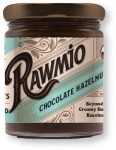

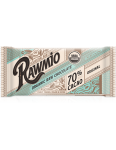

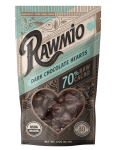
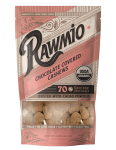

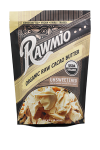
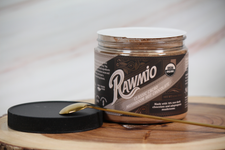

I am also curious about the levels of lead and cadmium in your chocolate.
What are the levels of lead in your chocolate? Consumer reports talks about soil contaminating the cacao beans while they dry in the sun. Are the beans protected in the drying process?
Leave a comment